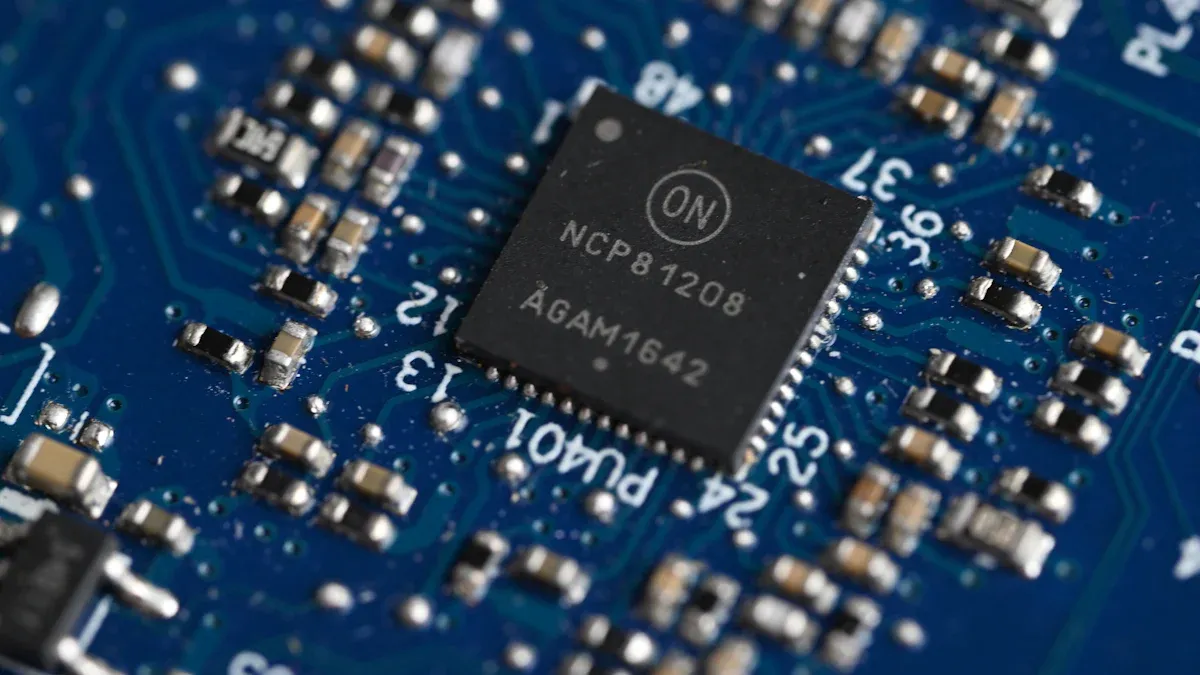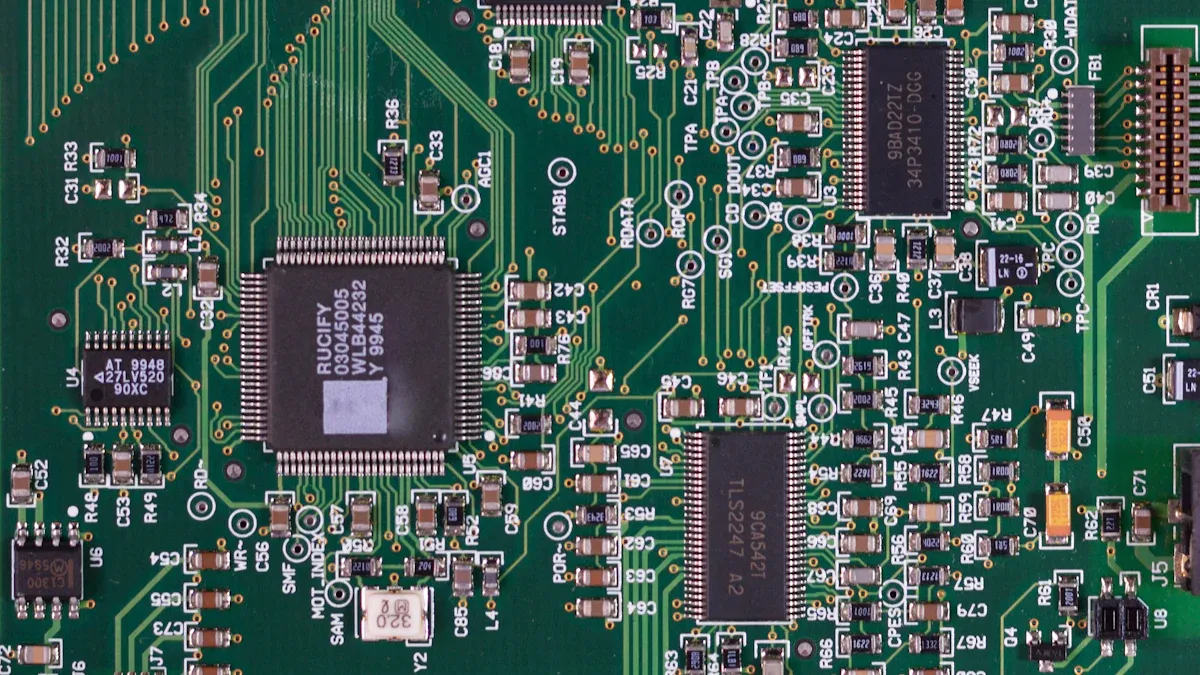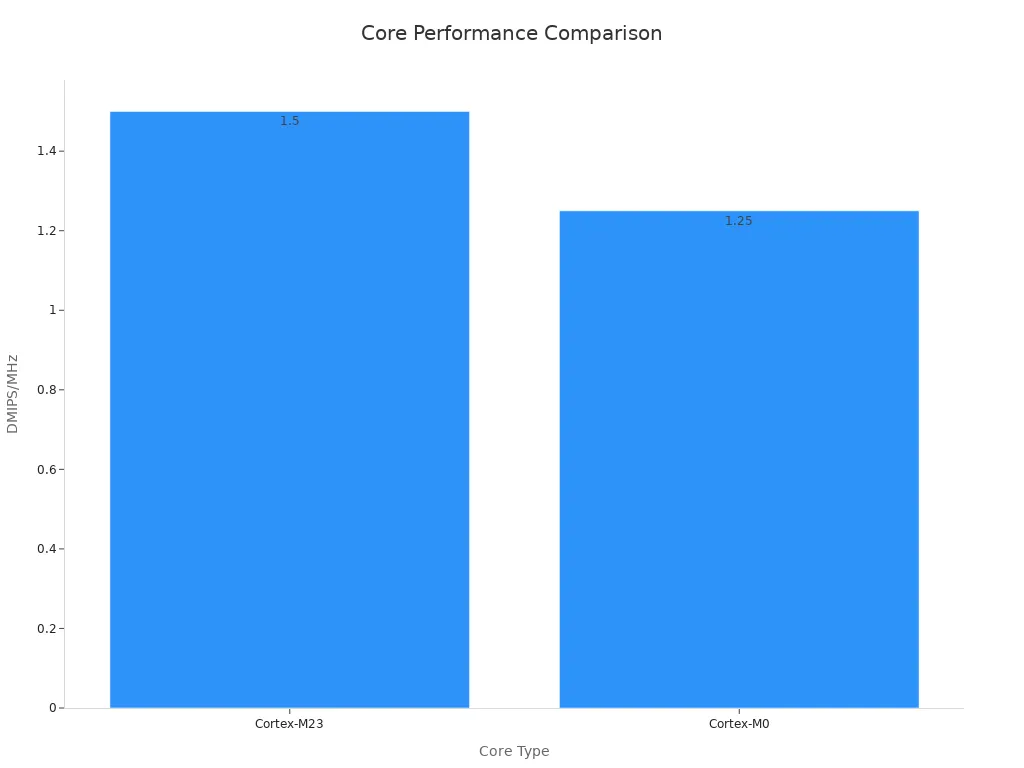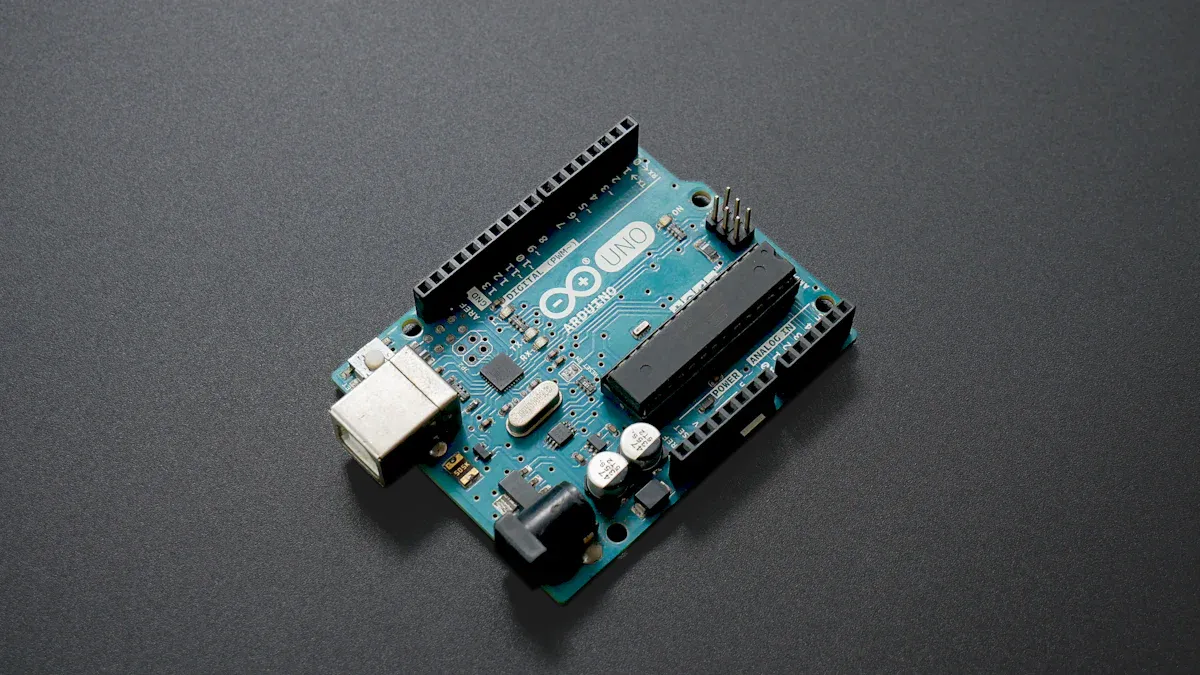GD32E230C8T6: Your 2025 Guide to Microcontroller Mastery

The embedded systems landscape of 2025 demands efficient, cost-effective, and feature-rich microcontrollers. These devices drive innovation across many industries. The GD32E230C8T6 emerges as a premier solution for these needs. It perfectly balances strong performance, excellent power efficiency, and a robust peripheral set. This makes it an ideal choice for a wide range of modern applications. Seasoned engineers and advanced hobbyists will find the GD32E230C8T6 relevant for building future-proof projects.
Key Takeaways
The GD32E230C8T6 microcontroller offers strong performance and saves power. It uses an ARM Cortex-M23 core for fast operations.
This microcontroller has enough memory for many projects. It includes 64KB of Flash and 8KB of RAM.
It connects to many devices with its GPIO pins and communication tools. It also has security features to protect your projects.
The GD32E230C8T6 is good for smart homes, factories, and wearable devices. It helps build many kinds of new products.
Developers can easily start with this microcontroller. Many tools and a helpful community support it.
Unpacking the GD32E230C8T6: Core Features

Core Architecture and Performance
This microcontroller features an ARM Cortex-M23 core. This core offers high performance and a very low gate count. The ARM Cortex-M23 core provides significant performance advantages. It performs up to 10% higher than the Cortex-M0+ core. The GD32E230C8T6 operates at a maximum clock frequency of 72 MHz. This speed allows for fast read operations. The ARM Cortex-M23 core also shows better efficiency. It achieves 1.5 DMIPS/MHz. This is a 20% advantage compared to the Cortex-M0 core's 1.25 DMIPS/MHz.
Core | DMIPS/MHz |
|---|---|
Cortex-M23 | 1.5 |
Cortex-M0 | 1.25 |

Memory Configuration
The device comes with specific memory configurations. It includes 64KB of program Flash capacity. It also has 8KB of total RAM capacity. These sizes are suitable for various application complexities in 2025. The Flash memory stores the program code. The RAM handles data during execution. This balance supports both simple and moderately complex embedded projects.
Feature | Value |
|---|---|
Program FLASH capacity | 64KB |
Total RAM capacity | 8KB |
Peripheral Set
A rich peripheral set enhances this microcontroller's versatility. It offers 39 general-purpose input/output (GPIO) pins. These pins allow flexible interaction with external components. Essential communication interfaces are also present. These include UART, SPI, and I2C. The microcontroller provides multiple timers for precise timing and control. It also features 10 12-bit A/D converters. These converters enable accurate analog signal measurement. The device supports dual I/O data transfer. This improves data throughput for demanding applications.
Power Efficiency
Power efficiency is crucial for modern devices. This microcontroller excels in this area. It offers several low-power modes. These modes significantly reduce energy consumption. They are critical for battery-operated and energy-conscious devices. The GD32E230C8T6 operates within a single power supply voltage range. This range is 1.8V to 3.6V. It typically operates at 3.3V DC. This wide range provides flexibility for different power designs.
Security Features
Modern applications require robust security. The device includes built-in protections. These features are relevant for modern IoT and industrial applications. They help safeguard intellectual property. They also protect against unauthorized access and tampering. This ensures data integrity and system reliability.
Key Advantages of the GD32E230C8T6
The GD32E230C8T6 stands out in the 2025 microcontroller market for several compelling reasons. It offers a strong combination of features that benefit both developers and project managers.
Cost-Effectiveness and Performance
This microcontroller provides an optimal balance between cost and performance. It delivers robust processing power without a high price tag. This makes it suitable for budget-conscious projects that still demand good capabilities. Engineers can achieve demanding application requirements while keeping development costs low. The efficient ARM Cortex-M23 core contributes to this balance. It ensures projects run smoothly and efficiently.
Development Ecosystem
Developers benefit from a comprehensive development ecosystem. Many tools and Integrated Development Environments (IDEs) support the GD32E230C8T6. These resources simplify the programming process. They help engineers write, debug, and deploy code effectively. A growing community also supports this microcontroller. Developers can find extensive documentation, example code, and peer support. This strong ecosystem accelerates project development and problem-solving.
Tip: Explore official GigaDevice resources and community forums for valuable insights and code examples.
Supply Chain Reliability
Supply chain reliability is crucial for project planning in 2025. The GD32E230C8T6 offers good availability and sourcing options. GigaDevice, the manufacturer, has a strong presence in the market. This helps ensure a stable supply of components. Project managers can plan their production schedules with greater confidence. This reliability minimizes delays and keeps projects on track.
Real-World Applications
The GD32E230C8T6 offers versatility. Developers can use it in many different applications. It serves various industries in 2025. This microcontroller helps build innovative products.
Smart Home Devices
Smart home devices benefit from this microcontroller. It controls lighting systems. It manages thermostats. It also operates security sensors. Its low power consumption makes it ideal for battery-powered sensors. Its small size allows integration into compact devices. The GD32E230C8T6 helps create responsive and energy-efficient smart home solutions.
Industrial Control
The GD32E230C8T6 is a strong choice for industrial control. It handles tasks in factories and plants. It manages motor drives. It also supports human-machine interfaces (HMI). Power monitor and alarm systems use this microcontroller. It helps ensure safe and efficient operations.
Industrial applications include:
Electric vehicles
Pumps
Fans
This microcontroller provides reliable performance for these critical systems.
Wearables and Health Monitoring
Wearable technology and health monitoring devices also use this microcontroller. Its power efficiency extends battery life. This is important for devices worn on the body. It collects sensor data from health trackers. It processes information for smartwatches. The GD32E230C8T6 helps create compact and long-lasting health devices.
IoT Edge Devices
The GD32E230C8T6 is excellent for IoT edge devices. These devices process data close to its source. This reduces latency and saves bandwidth. The GD32E230 series MCU is known for its cost-effectiveness. It successfully replaced Cortex-M0/M0+ products in many market segments since 2018. This makes it a great choice for entry-level IoT edge device functions.
IoT edge devices use this microcontroller for:
Graphic displays
Wireless detectors
Motor control
Portable devices
Industrial automation
Home appliances
Power tools
Smart home systems
Educational and Hobbyist Projects
Students and hobbyists find the GD32E230C8T6 useful. It offers an accessible platform for learning embedded systems. Many consider it an STM32F0 clone. This means it works well in projects where similar microcontrollers are typically used. It provides a cost-effective alternative.
One example is a DIY Digital Oscilloscope. This project uses a GD32 microcontroller. It handles signal processing and user interface operations. The goal is to build a small device. It measures and displays electrical waveforms. This helps analyze circuit behaviors and diagnose problems. The project involves capturing input signals. The microcontroller processes them. It then shows real-time waveforms on a screen. This project was part of a training camp. The camp focused on oscilloscope principles, PCB design, and GD32 microcontroller programming.
Getting Started with the GD32E230C8T6

New users can easily begin working with this microcontroller. Several resources and tools simplify the initial setup. Developers can quickly move from concept to functional prototype.
Recommended Development Boards and Kits
A good development board provides a solid starting point. It offers easy access to the microcontroller's features. The GD32E230C-EVAL board is a full-function evaluation board. It is specifically designed for the GD32E230C8T6 microcontroller. This board helps users explore its capabilities.
GD32E230C-EVAL: This board offers comprehensive evaluation features. It helps developers test and debug applications.
Essential Software Tools and IDEs
Software tools are crucial for programming the microcontroller. Integrated Development Environments (IDEs) provide a complete coding environment. They include editors, compilers, and debuggers.
Keil MDK: Many professional developers use Keil. It offers powerful debugging features.
IAR Embedded Workbench: This IDE is known for its highly optimized compilers. It helps create efficient code.
PlatformIO: This open-source ecosystem supports many development platforms. It offers flexibility and a wide range of libraries.
Basic Project Setup
Setting up a new project involves a few key steps. First, install the chosen IDE. Next, install the necessary toolchains and drivers. Then, create a new project within the IDE. Configure the project for the specific GD32E230C8T6 device. Finally, write and compile the initial code. Flash the code onto the development board.
Community Resources and Support Forums
A strong community offers valuable support. Developers can find answers to questions. They can share knowledge and collaborate on projects. Online forums, official documentation, and example code are readily available. These resources help users overcome challenges. They also accelerate the learning process.
Tip: Explore official GigaDevice documentation and community forums. They provide valuable insights and code examples for your projects.
The GD32E230C8T6 stands as a versatile, powerful, and future-proof microcontroller for 2025 and beyond. It offers a compelling blend of features, performance, and cost-effectiveness. This makes it suitable for a diverse array of embedded applications. Engineers should explore its capabilities for their next innovative project. It holds significant potential to drive success in the evolving technological landscape.
FAQ
What makes the GD32E230C8T6 cost-effective?
The GD32E230C8T6 offers strong performance at a lower price. Its efficient ARM Cortex-M23 core delivers power without high costs. This balance makes it ideal for budget-friendly projects.
How does the GD32E230C8T6 save power?
It includes several low-power modes. These modes reduce energy use significantly. This feature is crucial for devices running on batteries. It also helps create energy-efficient products.
Is the GD32E230C8T6 suitable for beginners?
Yes, it is. A comprehensive development ecosystem supports the microcontroller. Many tools and IDEs are available. A growing community also provides help and resources. This makes it easier for new users to start.
What security features does the GD32E230C8T6 offer?
The device has built-in protections. These features safeguard intellectual property. They also prevent unauthorized access. This ensures data integrity for IoT and industrial applications.
Can the GD32E230C8T6 be used in smart home devices?
Absolutely! Its low power consumption and compact size make it perfect for smart home applications. It can control lighting, manage thermostats, and operate security sensors efficiently.
See Also
The 10 Best Microcontrollers for Embedded Systems: 2025 Edition
Microcontrollers and Flash Memory: Essential Basics for Beginners to Understand
Discover the Amazing Features of 32-bit ARM Cortex MCUs
Industrial D Flash Microcontrollers: Exploring Their Uses and Key Applications
Demystifying Electronic Digital Integrated Circuits: A Comprehensive Guide
